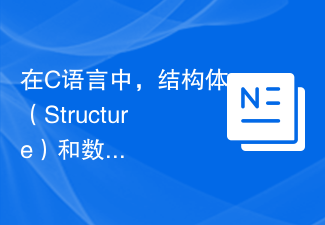This time I will bring you the difference between method and computed in Vue. What are the precautions for using method and computed in Vue? The following is a practical case, let's take a look.
Both computed and methods in the configuration parameters of new Vue can handle a large amount of logic code, but when to use whichattribute, you need to distinguish carefully to use vue correctly.
computed is called a computed attribute. As the name suggests, calculation must return a calculation result. Therefore, when we need to process a large amount of logic, but in the end we want to obtain the final result, we can use computed;In order to illustrate the difference between method and computed, here I would like to first take a look at what the computed attribute says on the vue official website: Let’s look at an example:nbsp;html>
<meta>
<title>Title</title>
<script></script>
<p>
//直接在模板中绑定表达式
</p><p>{{message.split('').reverse().join('')}}</p>
//运用计算属性
<p>message反转之后的结果:{{reverseMessage}}</p>
<script>
var vm=new Vue({
el:"#app",
data:{
message:"hello"
},
computed:{
reverseMessage:function(){
return this.message.split('').reverse().join('');
}
}
})
</script>
In the above case, the template is no longer simple and clear. You have to confirm a second time before realizing that this is a reverse message. The problem gets worse when you want to display the message in reverse multiple times in the template. This is why for any complex logic you should use computed properties. Below I will use method and computed to compare:
nbsp;html>
<meta>
<title>Title</title>
<script></script>
<p>
</p><p>{{message}}</p>
//直接在模板中绑定表达式
<p>{{message.split('').reverse().join('')}}</p>
//运用计算属性
<p>{{reverseMessage}}</p>
//运用methods方式
<p>{{methodMessage()}}</p>
<script>
var vm=new Vue({
el:"#app",
data:{
message:"hello"
},
computed:{
reverseMessage:function(){
return this.message.split('').reverse().join('');
}
},
methods:{
methodMessage:function () {
return this.message.split('').reverse().join('');
}
}
})
</script>
I compared these two methods. The returned result is the same, but in the method of computed properties, you don’t need to add () when using attributes, while the methods method should be used like a method, and you must add (). The two methods are also very different in
I believe you have mastered the method after reading the case in this article. For more exciting information, please pay attention to other related articles on the php Chinese website! Recommended reading:
Display of http requests and loading in Vue2.0
How does Vue2.0 realize bidirectional component data Binding
The above is the detailed content of The difference between method and computed in Vue. For more information, please follow other related articles on the PHP Chinese website!
 在C语言中,while(1)和while(0)之间的区别是什么?Aug 31, 2023 am 10:45 AM
在C语言中,while(1)和while(0)之间的区别是什么?Aug 31, 2023 am 10:45 AM我们知道在C语言中,'while'关键字用于定义一个循环,该循环根据传递给循环的条件来工作。现在,由于条件可以有两个值,即真或假,所以如果条件为真,则while块内的代码将被重复执行,如果条件为假,则代码将不会被执行。现在,通过将参数传递给while循环,我们可以区分while(1)和while(0),因为while(1)是一个条件始终被视为真的循环,因此块内的代码将开始重复执行。此外,我们可以说明,传递给循环并使条件为真的不是1,而是如果任何非零整数传递给while循环,则它将被视为真条件,因
 PHP Fatal error: Call to a member function fetch()的解决方法Jun 23, 2023 am 09:36 AM
PHP Fatal error: Call to a member function fetch()的解决方法Jun 23, 2023 am 09:36 AM在使用PHP进行web应用开发时,很多时候会需要使用数据库。而在使用数据库时,错误提示是非常常见的事情。其中,PHPFatalerror:Calltoamemberfunctionfetch()是一种比较常见的错误,它会在使用PDO查询数据库时出现。那么,这个错误是怎么引起的,以及如何解决呢?本文将为大家详细阐述。一、错误产生原
 win32和win64有什么区别May 29, 2023 pm 05:22 PM
win32和win64有什么区别May 29, 2023 pm 05:22 PMwin32和win64的区别是:1、win32是指Microsoft Windows操作系统的32位环境,win64是指Microsoft Windows操作系统的64位版本,比32位版本更加稳定快速;2、win32最高支持2G的内存,win64必须是4G以上内存;3、win64支持基于64位的处理器,而win32却不能完全支持;4、win32追求简洁,win64追求性能。
 在C语言中,结构体(Structure)和数组(Array)之间的区别是什么?Aug 30, 2023 pm 09:37 PM
在C语言中,结构体(Structure)和数组(Array)之间的区别是什么?Aug 30, 2023 pm 09:37 PM在C中,结构体和数组都用作数据类型的容器,即在结构体和数组中我们都可以存储数据,也可以对它们执行不同的操作。基于内部实现,以下是两者之间存在一些基本差异。Sr.编号键结构数组1定义结构体可以定义为一种数据结构,用作容器,可以容纳不同类型的变量。另一方面,数组是一种用作容器的数据结构,可以容纳相同类型的变量,但不支持多种数据类型变量。2内存分配输入数据的内存分配结构不必位于连续的内存位置。而在数组的情况下,输入数据存储在连续的内存分配中,这意味着数组将数据存储在分配连续内存块的内存模型中(即,具有
 Vue3和Vue2的区别:更丰富的生命周期钩子Jul 08, 2023 pm 05:19 PM
Vue3和Vue2的区别:更丰富的生命周期钩子Jul 08, 2023 pm 05:19 PMVue3和Vue2的区别:更丰富的生命周期钩子Vue是一种流行的JavaScript框架,用于构建交互式的Web应用程序。Vue2是Vue.js的稳定版本,而Vue3是Vue.js的最新版本。Vue3带来了许多改进,其中之一是更丰富的生命周期钩子。本文将介绍Vue3和Vue2生命周期钩子的区别,并通过代码示例进行演示。Vue2的生命周期钩子在Vue2中,我们
 JavaScript和PHP的cookie之间有哪些区别?Sep 02, 2023 pm 12:29 PM
JavaScript和PHP的cookie之间有哪些区别?Sep 02, 2023 pm 12:29 PMJavaScriptCookie使用JavaScriptcookie是记住和跟踪偏好、购买、佣金和其他信息的最有效方法。更好的访问者体验或网站统计所需的信息。PHPCookieCookie是存储在客户端计算机上的文本文件并保留它们用于跟踪目的。PHP透明地支持HTTPcookie。JavaScriptcookie如何工作?您的服务器将一些数据发送到访问者的浏览器cookie的形式。浏览器可以接受cookie。如果存在,它将作为纯文本记录存储在访问者的硬盘上。现在,当访问者到达站点上的另一个页面时
 win7企业版与win7旗舰版有什么区别的详细介绍Jul 14, 2023 pm 08:37 PM
win7企业版与win7旗舰版有什么区别的详细介绍Jul 14, 2023 pm 08:37 PMwin7有好几个版本,对于这些琳琅满目的win7版本,很多朋友也是不知道这些win7版本有什么区别了,功能上哪个更好,哪个系统更适合自己,这里小编和大家介绍下win7企业版与win7旗舰版有什么区别的详细介绍,大家快来看看吧。1、Windows7企业版(Enterprise)这个版本面向企业市场的高级版本,主要对象是企业用户以及其市场,满足企业数据共享、管理、安全等需求。包含多语言包、UNIX应用支持、BitLocker驱动器加密、分支缓存(BranchCache)等。通过大量授权给有与微软签订
 Vue报错:无法正确使用computed属性进行数据计算,如何解决?Aug 18, 2023 am 10:58 AM
Vue报错:无法正确使用computed属性进行数据计算,如何解决?Aug 18, 2023 am 10:58 AMVue报错:无法正确使用computed属性进行数据计算,如何解决?在使用Vue进行开发时,computed属性是一个非常常用且强大的特性,它可以帮助我们对数据进行计算和处理。但有时候我们会遇到一些问题,例如无法正确使用computed属性进行数据计算,这时候我们就需要解决这个问题。下面是一个简单的例子来说明这个问题:<template>&


Hot AI Tools

Undresser.AI Undress
AI-powered app for creating realistic nude photos

AI Clothes Remover
Online AI tool for removing clothes from photos.

Undress AI Tool
Undress images for free

Clothoff.io
AI clothes remover

AI Hentai Generator
Generate AI Hentai for free.

Hot Article

Hot Tools

Atom editor mac version download
The most popular open source editor

mPDF
mPDF is a PHP library that can generate PDF files from UTF-8 encoded HTML. The original author, Ian Back, wrote mPDF to output PDF files "on the fly" from his website and handle different languages. It is slower than original scripts like HTML2FPDF and produces larger files when using Unicode fonts, but supports CSS styles etc. and has a lot of enhancements. Supports almost all languages, including RTL (Arabic and Hebrew) and CJK (Chinese, Japanese and Korean). Supports nested block-level elements (such as P, DIV),

SublimeText3 Linux new version
SublimeText3 Linux latest version

VSCode Windows 64-bit Download
A free and powerful IDE editor launched by Microsoft

ZendStudio 13.5.1 Mac
Powerful PHP integrated development environment






